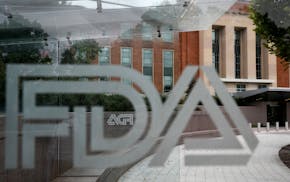ALVISO, Calif. – Ana Navarro lives with her husband and two young children in a 450-square-foot apartment. The kids — ages 10 and 3 — share a bedroom that's more like a glorified closet.
The family pays $1,800 a month to live in its crowded flat across the street from an old landfill in this largely Latino enclave at the southern edge of San Francisco Bay. Navarro works the night shift as a janitor at Stanford University, earning $15 an hour, while her husband drives a truck for $20 an hour. Factor in the cost of food, gas, car insurance and other necessities, and making the rent becomes a monthly drama.
"I am stressed every single day — preoccupied," Navarro said. "I'm always calling my husband: 'Next year we'll have to pay even more. What do we do?' "
They plan to leave Alviso. It's become too expensive for some — a striking transformation of this historically working-class community.
Long an affordable island of calm amid the Bay Area's superheated economy, Alviso is becoming one more bedroom community for the steady influx of workers drawn to Silicon Valley. Its proximity to the tech industry's global nerve center makes it an attractive prospect for renters and home buyers, who may not know a thing about its colorful history. But as tech money and gentrification become facts of life, locals — some whose families have lived here for generations — fear their home will lose a portion of the charm that drew them to Alviso in the first place.
Incorporated in 1852, Alviso originally thrived as a shipping port and transportation hub, with steamboats plying the bay to San Francisco, while dance halls and gambling establishments prospered during the 1920s and 1930s. What remains is a community that can seem frozen in time with its 19th-century landmarks, neighborhood groceries, mom-and-pop Mexican restaurants — and its stillness. The shoreline hiking trails in and around Alviso Marina County Park are lightly traversed. The South Bay Yacht Club is a social club without a marina — it closed years ago — but members still sit on the club's deck, clutching mugs of coffee as they watch the sunset.
"You're this close to the forefront of technology," said Mike Hauser, 28, who rents in Alviso and works as a media producer in San Jose. "It's like you've got the future right next to the past."
Bounded by creeks, sloughs, a river and Hwy. 237 — next to which sheep could be seen grazing only a few years ago — Alviso officially became part of San Jose in 1968. Though physically and culturally separated from the rest of San Jose and other neighboring cities — Santa Clara, Sunnyvale and Milpitas — Alviso is now feeling the impact of the same economic forces that have transformed Silicon Valley and the region as a whole.
In the past few years, development has crept straight up N. First Street to the Alviso border, and then across Hwy. 237 into town.
TiVo and Polycom have offices here. Two hotels are on the way. Apple and Google have purchased land tracts close to Alviso, and it's not unusual to hear reports of larger Alviso apartments renting for $3,000 or more.
"The people who are arriving in the area — tech people, high-profile people — are building new houses near our church," said the Rev. Hector Basanez of Our Lady Star of the Sea Church. "This is a very poor parish, and some of the people are leaving — going to cheaper places."
The median sale price of a single-family home in 2011 was $485,000. In 2016, it was $605,000 — still well below the Santa Clara County median of about $850,000. But as in many other neighborhoods that are affordable compared with the region's priciest cities, newer and renovated houses lately have sold in Alviso for closer to $1 million, occasionally more.
"I can see the path to change," said real estate agent Steven Tran, who recently listed a duplex in Alviso for $1.2 million. The sale is now pending for more than $1 million.
He touted the hamlet — home to only about 2,000 people — as a commuter's dream, minutes away from Levi's Stadium and "still affordable."
Rick Smith, president of the Santa Clara County Association of Realtors, sees another "uptick" in home prices coming with the latest development proposal for Alviso: A Topgolf recreation complex, including a triple-deck driving range with restaurants, retail and a 200-room hotel. The complex is planned for 40 wide-open acres at the edge of downtown Alviso, with talk of 500 new jobs. The project has emerged as the latest litmus test for Alviso's future.
Opponents, whose lawsuit may delay the groundbreaking, fear added noise and traffic — and say the land would be better used for affordable housing.
"If Topgolf comes in, it's just going to increase the rent here," said Mark Espinoza, who leads the Organizacion Comunidad de Alviso, which has sued the developers.
But proponents say the project offers a chance to preserve a semblance of the old Alviso: "It's the best use of the land — the most open space, the least congestion," said Dick Santos, a businessman and property owner whose father was mayor of Alviso in the 1950s. He argued that Topgolf will give a shot in the arm to Alviso's downtown, drawing newcomers to the community's old-school establishments, while giving locals a shot at those 500 jobs: "I'm a realist. We're the last frontier, and this is our final hurrah."

Remnants of bird flu virus found in pasteurized milk, FDA says
Timberwolves dispute between Taylor and Lore, Rodriguez over ownership moves to mediation
Tesla 1Q profit falls 55%, but stock jumps as company moves to speed production of cheaper vehicles
Montana minor league baseball team in dispute with National Park Service over arrowhead logo
